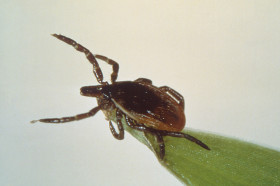FOR IMMEDIATE RELEASE
Media Contact:
Tara DiMilia, 908-947-0500, tara.dimilia@TMstrat.com
American Ninja Warrior Elet Hall Educates about Lyme Disease Risks
Growing issue of Lyme disease in California prompts Association for Environmental and Outdoor Education (AEOE) to provide Lyme education at statewide conference
Silicon Valley, CA, May 9, 2016 — Bay Area Lyme Foundation, a leading non-profit funder and advocate of innovative Lyme disease research in the US, today announced that Elet Hall, ambassador for the Bay Area Lyme Foundation, and Jo Ellis, director, education outreach, Bay Area Lyme Foundation helped raise awareness about Lyme disease and tick-borne illnesses among California Association for Environmental and Outdoor Education (AEOE) conference attendees. Attendees included individuals who work in museums, zoos, nature centers, and state and national parks as well as environmental and outdoor educators who help instill an understanding of nature to individuals of all ages, from California and neighboring states.
